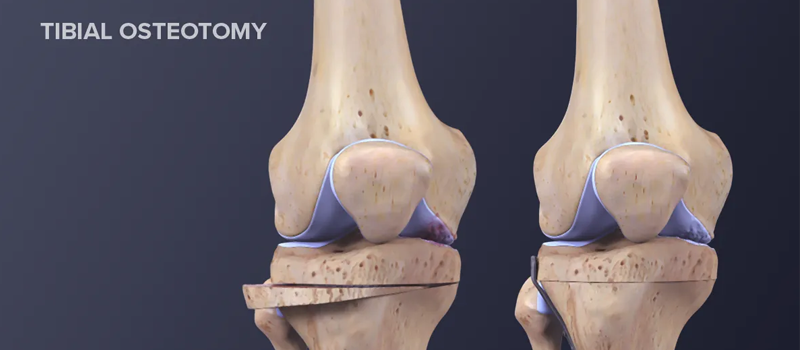
Osteotomy is a surgical procedure that involves cutting and reshaping a bone to correct alignment issues or deformities. It is commonly performed in orthopedic surgery to treat conditions such as osteoarthritis, malalignment of bones, or bone deformities. Osteotomy aims to restore proper alignment and weight distribution, alleviate pain, and improve function, thereby delaying or even avoiding the need for joint replacement surgery.
During an osteotomy, the patient is placed under general or regional anesthesia, depending on the specific procedure and patient preference. An incision is made over the affected bone, and the surgeon carefully cuts and repositions the bone to achieve the desired correction. The bone is fixed in its new position using plates, screws, or other fixation devices. Once the bone is stabilized, the incision is closed with sutures or staples.
There are different types of osteotomy procedures, each designed to address specific conditions and bone segments. Some common types of osteotomy include:
- High Tibial Osteotomy (HTO):- This procedure involves cutting and repositioning the upper part of the tibia (shinbone) to realign the knee joint. It is commonly performed to treat medial compartment osteoarthritis and correct varus deformities (bow-legged appearance).
- Distal Femoral Osteotomy (DFO):- In this procedure, the lower part of the femur (thighbone) is cut and realigned to correct valgus deformities (knock-knee appearance) and address knee joint instability.
- Femoral Osteotomy:- It involves cutting and repositioning the femur to correct deformities in the hip joint, such as hip dysplasia or femoroacetabular impingement.
- Pelvic Osteotomy:- This procedure involves cutting and repositioning the pelvic bones to address conditions like hip dysplasia or to improve joint stability.
Osteotomy is typically recommended for younger, active patients who have localized joint damage or deformities and who are not suitable candidates for joint replacement surgery. The procedure aims to preserve the natural joint and delay or prevent the need for more invasive procedures. Osteotomy can provide pain relief, improve function, and prolong the lifespan of the affected joint.
Recovery after an osteotomy varies depending on the specific procedure and the patient's overall health. Physical therapy and rehabilitation play a crucial role in the recovery process. Patients are typically required to use crutches or assistive devices for a period of time to protect the healing bone and allow for proper alignment. Pain medications and other supportive measures may be prescribed to manage post-operative discomfort and aid in the healing process. Regular follow-up visits with the surgeon are scheduled to monitor the progress and assess the success of the procedure.
As with any surgical procedure, there are risks associated with osteotomy. These include infection, blood clots, nerve or blood vessel damage, poor bone healing, and the potential for the correction to be incomplete or unstable. Patients should discuss the potential risks and benefits of osteotomy with their orthopedic surgeon to make an informed decision regarding their treatment plan.
In conclusion, osteotomy is a surgical procedure that involves cutting and reshaping a bone to correct alignment issues or deformities. It is commonly performed to treat conditions such as osteoarthritis or bone malalignment. Osteotomy aims to restore proper alignment, alleviate pain, and improve joint function. It is typically recommended for younger, active patients who have localized joint damage and who are not suitable candidates for joint replacement surgery. As with any surgical procedure, there are risks involved, and patients should have a thorough discussion with their orthopedic surgeon to understand the potential benefits and risks of osteotomy.